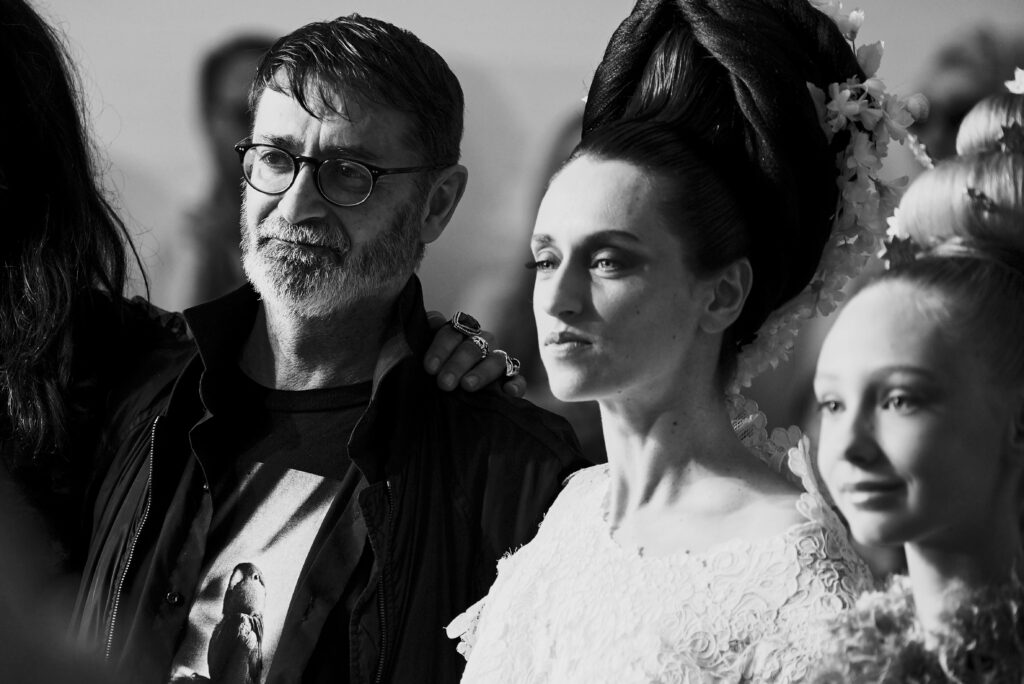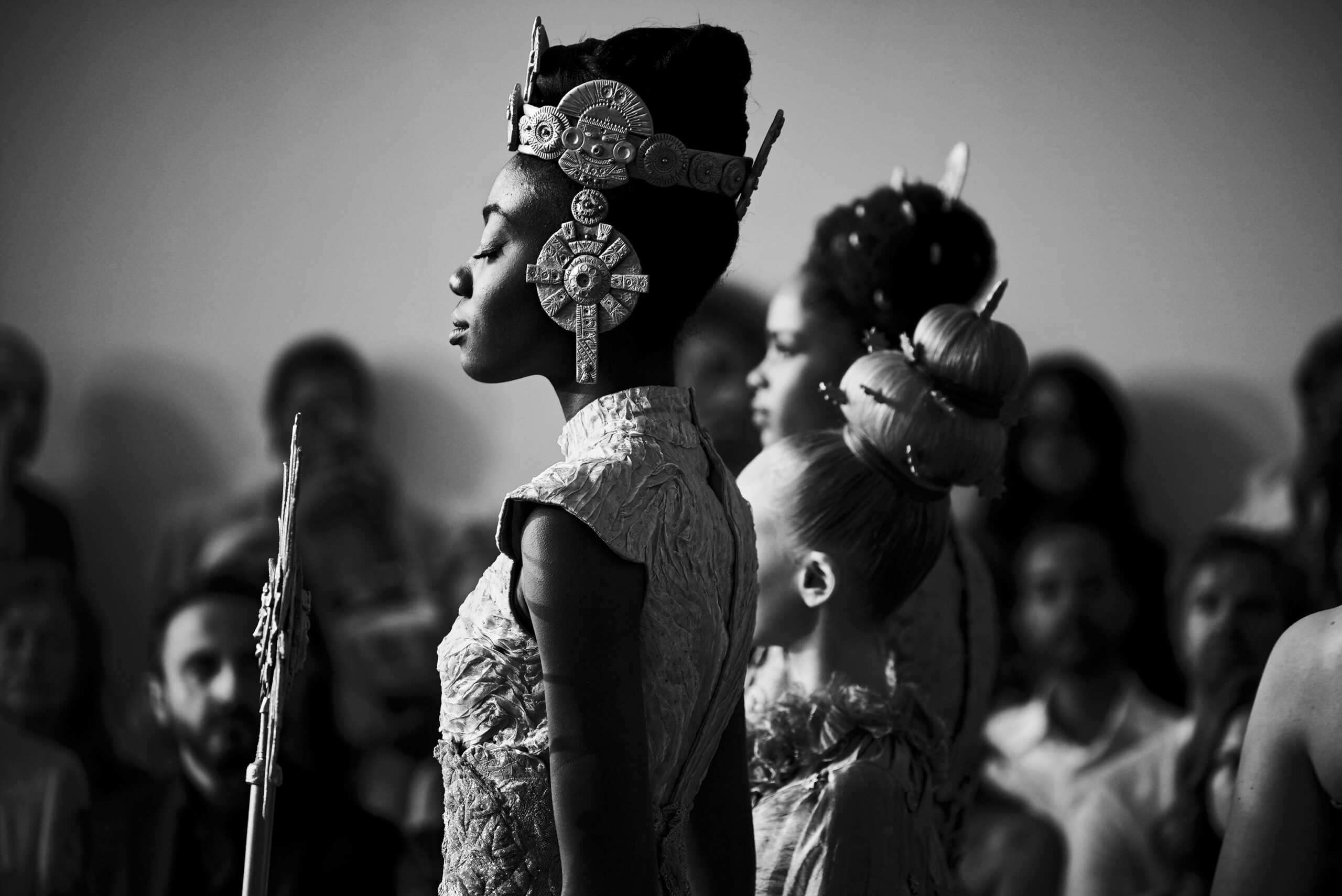Credits ©AmauryVoslion
In a world where myth and matter dance in gold-lit harmony, Franck Sorbier returns with a collection that is less a wardrobe than a chronicle, a reverie woven in organza, lace, and legacy. With his Winter couture, Sorbier revisits the shimmering mirage of Eldorado, not as conquest, but as poetry. He traces its gilded path from the rituals of the Chibcha people to the tragic unraveling of the Inca Empire under the weight of European greed. Yet in his hands, this history is not a relic. It is rebirth.
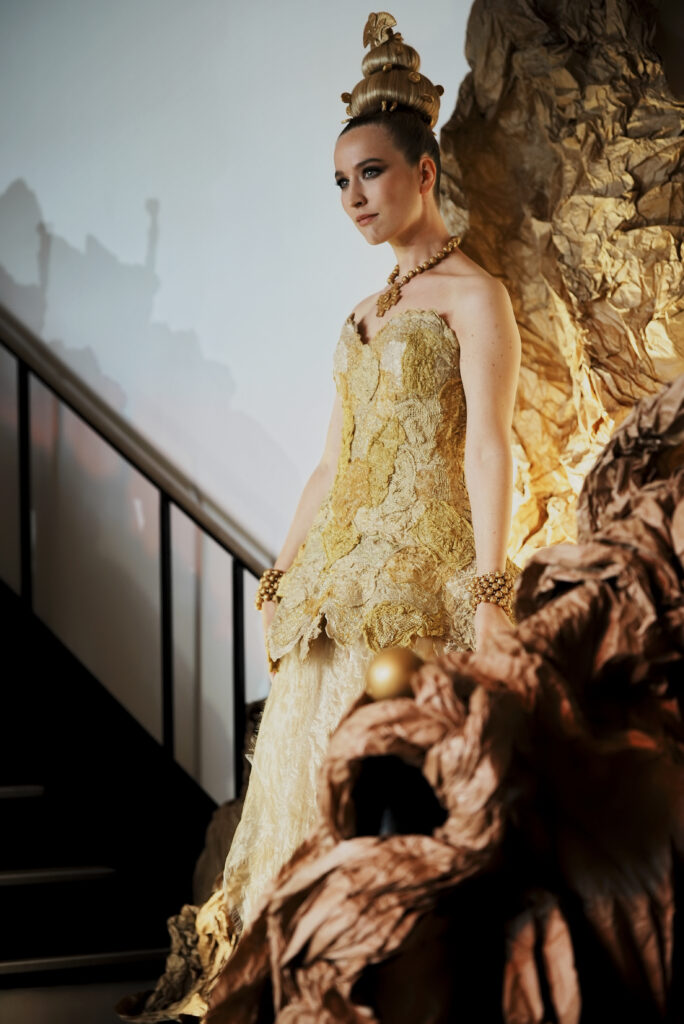
Credits ©AmauryVoslion
Each silhouette breathes with spirit and symbolism, conjuring Andean culture not as a costume, but as a memory cherished and reimagined. The golds are not mere ornament—they whisper of ancient suns and sacred waters. Velvets are draped and devoured, crushed and composed into gestures of depth and richness. Metallic organzas ripple like ceremonial smoke, touched by the hand, never hurried. Guipure lace, sculpted clay jewels, pastel beading, and shimmering silk ribbons are not details—they are devotions.
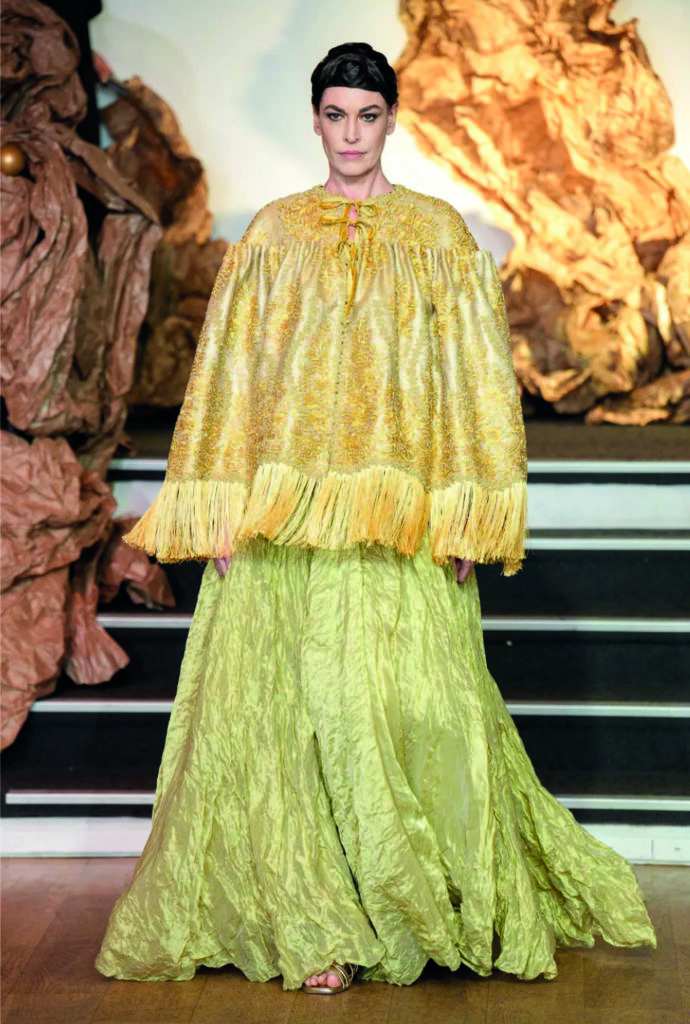
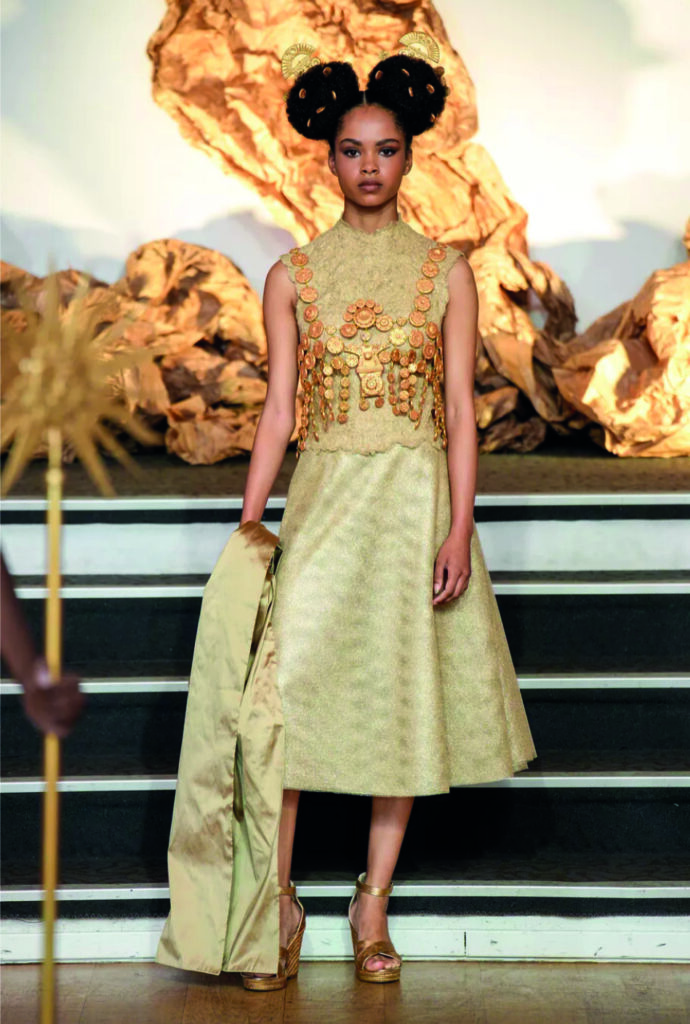
Credits ©Launchmetrics/FranckSorbier
There is Inti, a dress in pale gold organza, molded and cinched like a sun-kissed relic, crowned with a handcrafted sceptre of plaster and clay by Bruno Le Page. There is Chakana, where patchwork bustiers gleam like fractured treasure maps, paired with organza skirts that shimmer like sacred lakes. Atahualpa appears in compressed tulle and shantung, adorned with Tiki emblems and solar combs, as if stepping through time from the temples of Cuzco. Ekeko dances in hand-painted taffetas, layered beneath a frothy poncho like golden mist.
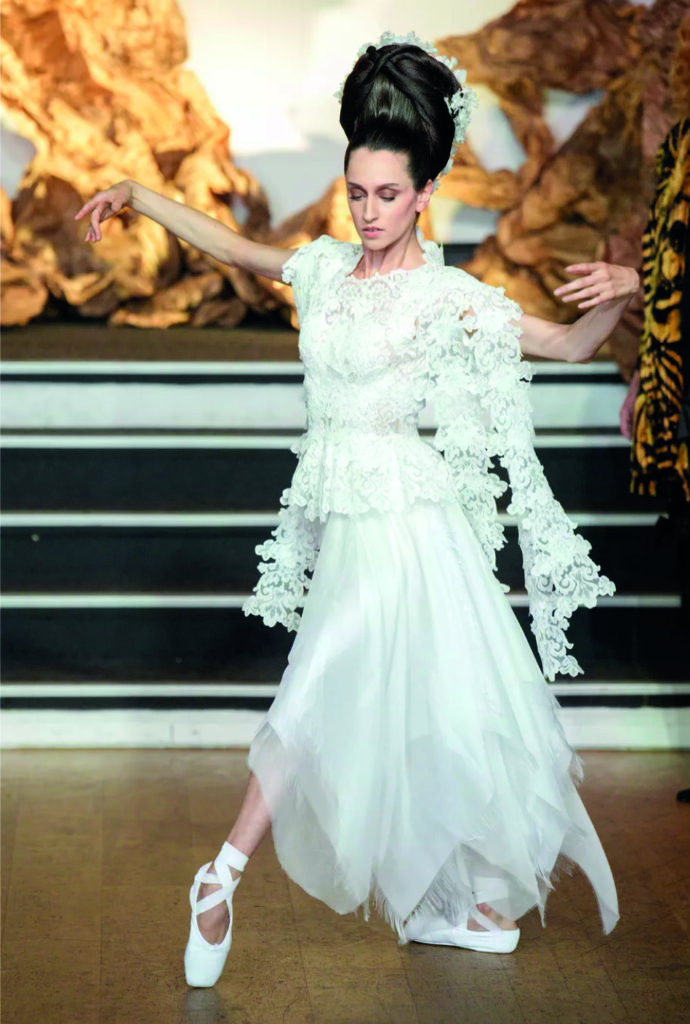
Credits ©Launchmetrics/FranckSorbier
But Sorbier’s narrative extends beyond the Andes. In the silhouettes of the conquistadors, we see not admiration but a haunted reflection—coats of velvet and lace, of woven ribbons and stiffened shantung. They echo the hunger that once consumed a continent, reimagined now through silhouettes that carry both weight and warning. The figures are noble but uneasy, opulent yet shadowed by their own histories.
Then come the Dames de Lima—Paloma, Paz, Pilar, Palma, each as vivid as an oil painting, their forms sculpted in black crepe, cherry-red embroidery, and coral beading. These women walk not as muses but as memories made flesh, as protectors of a beauty that was never fully lost.
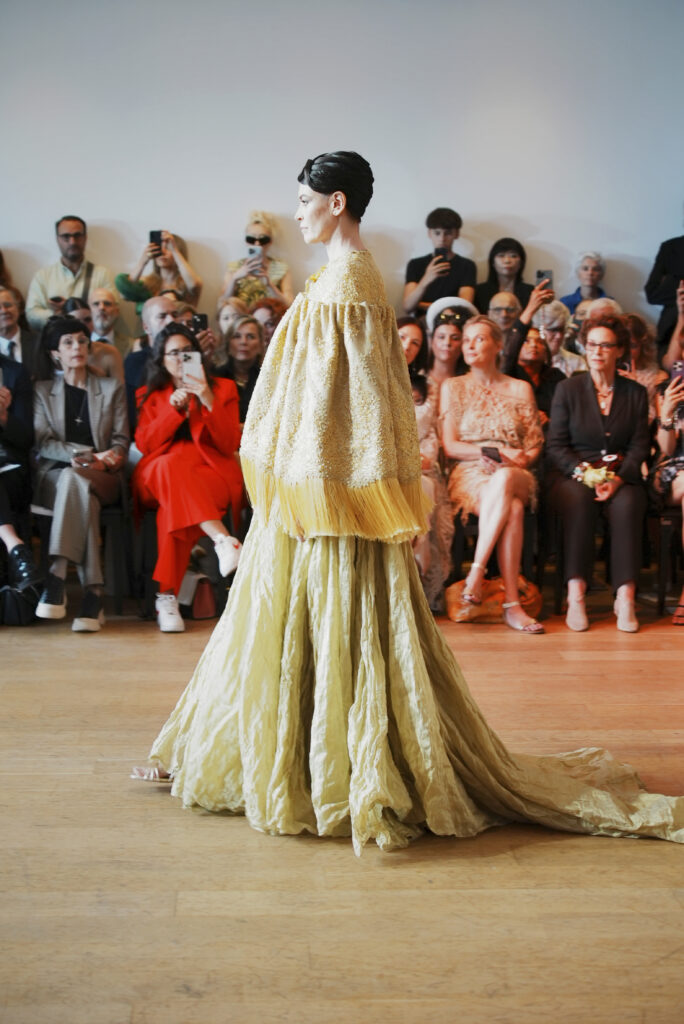
Credits ©AmauryVoslion
There is reverence too in the sanctuary. Machu Picchu is reborn in black velvet and Valenciennes lace, while the Angel Letiel descends in painted panne and mosaic tulle, a baroque vision pulled from the Cuzco school and translated into movement. In the final crescendo, Sorbier invokes Mama Killa, the goddess of the moon, her form wrapped in Lyon lace and white chiffon, a celestial hush in the golden din.
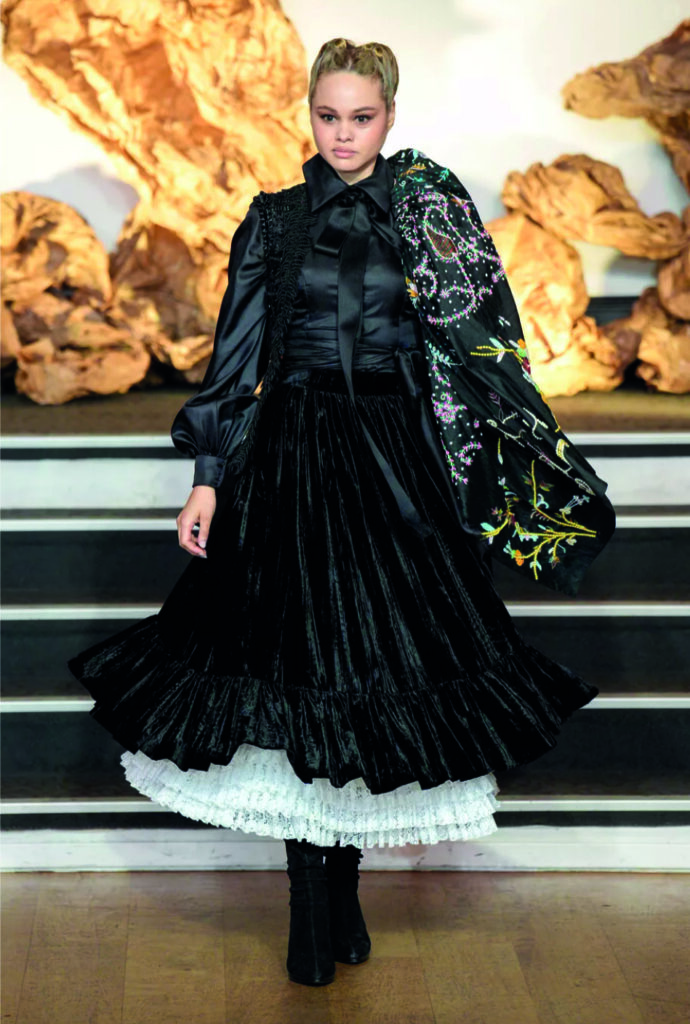
Credits ©Launchmetrics/FranckSorbier
The entire collection is a tapestry of compression and release, past and future, skin and soul. This is not fashion as product. It is haute couture as protest, as praise, as poetry. Sorbier stands firm in his values no fur, no cruelty, no compromise. His Eldorado is not for plunder. It is a garden to be tended, a dream to be protected, a light to be worn.
And in a world ever hungry for new myths, Franck Sorbier reminds us that the most radiant treasures are those that honor where we come from—and imagine where we might yet go.
